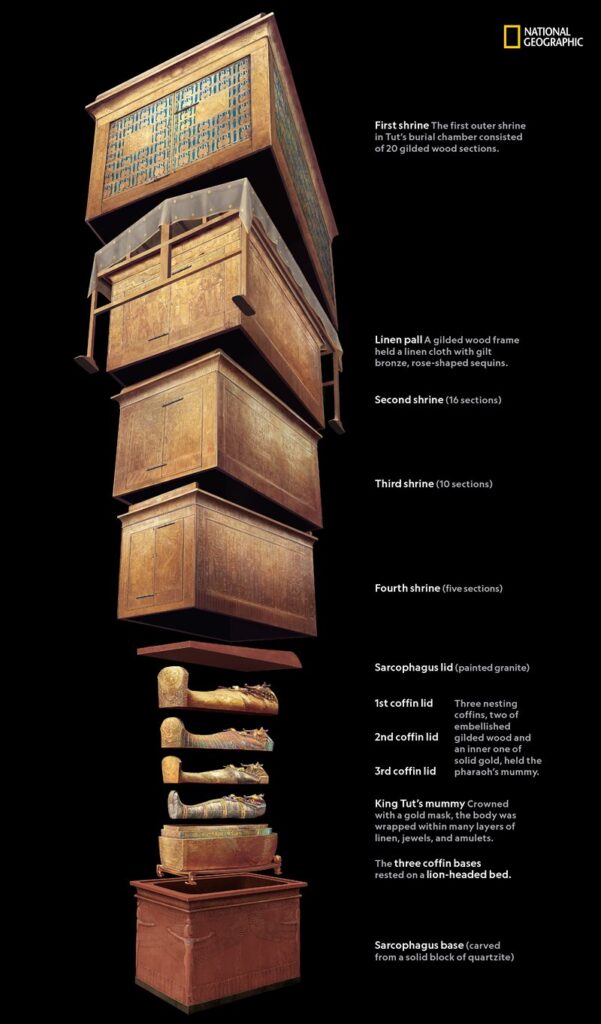Guarded by an ancient seal for an astonishing 3,245 years, the tomb of Tutankhamun unveiled a treasure trove that left archaeologists in awe when it was first opened in 1922.
This burial site, holding the remains of the youthful Pharaoh, stands out not only for the vast collection of artifacts within but also for its remarkable immunity to the plundering that befell many other tombs in ancient Egypt.
Tutankhamun’s burial chamber featured a series of four sarcophagi housed within five protective shrines. The tomb’s late discovery can be attributed to its concealed location beneath the debris from the tomb of Ramesses IV, situated directly above its entrance.
Despite the outermost shrine having been opened twice in antiquity, the doors of the second shrine, crafted from gilded wood and containing the royal sarcophagus, still bore the necropolis seal.
This seal signified that the pharaoh’s mummy remained undisturbed and intact. The renowned archaeologist and Egyptologist Howard Carter led the expedition that unearthed Tutankhamun’s tomb in the early 1920s, revealing a treasure surpassing any previous discoveries.
Intriguingly, Harry Burton’s photographs captured the ornate doors of the second shrine tightly sealed with simple copper handles bound together by a securely tied rope.
The knot was accompanied by a delicate clay seal featuring Anubis, the jackal god of ancient Egyptians entrusted with safeguarding the burial grounds.
Carter and his financial supporter, Lord Carnarvon, were aware of the compromised state of the tomb from the outset, marked by a re-plastered and sealed hole in the outer doorway.
Upon entering the tomb, the disarray of the artifacts, damage to several objects, and the absence of solid metalwork, bedding, glass, oils, and unguents suggested that the tomb had fallen victim to robbery in antiquity.
Legend has it that Carter discovered an ancient clay tablet in the antechamber, bearing an inscription that forewarned, “Death will slay with his wings whoever disturbs the peace of the pharaoh.”
This inscription later morphed into the infamous “Curse of the Pharaohs,” a myth that purportedly brings bad luck, illness, or death to those who disturb the resting place, whether thief or archaeologist.

#Seal #Protected #Tutankhamuns #Tomb #Years

